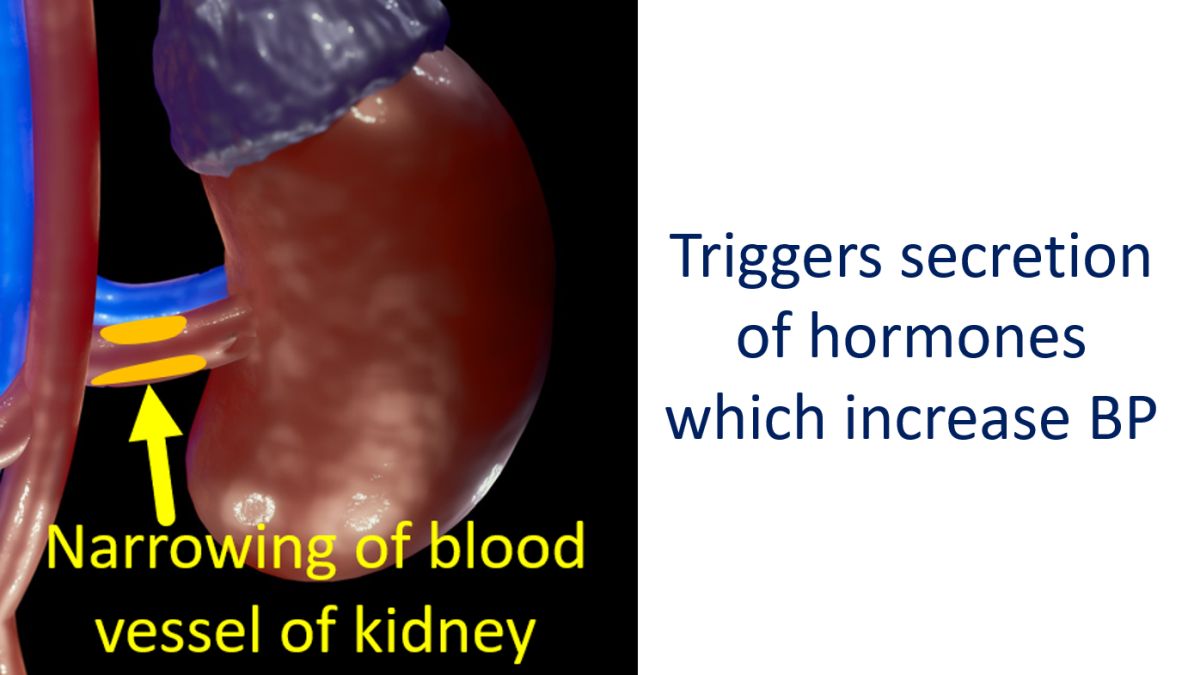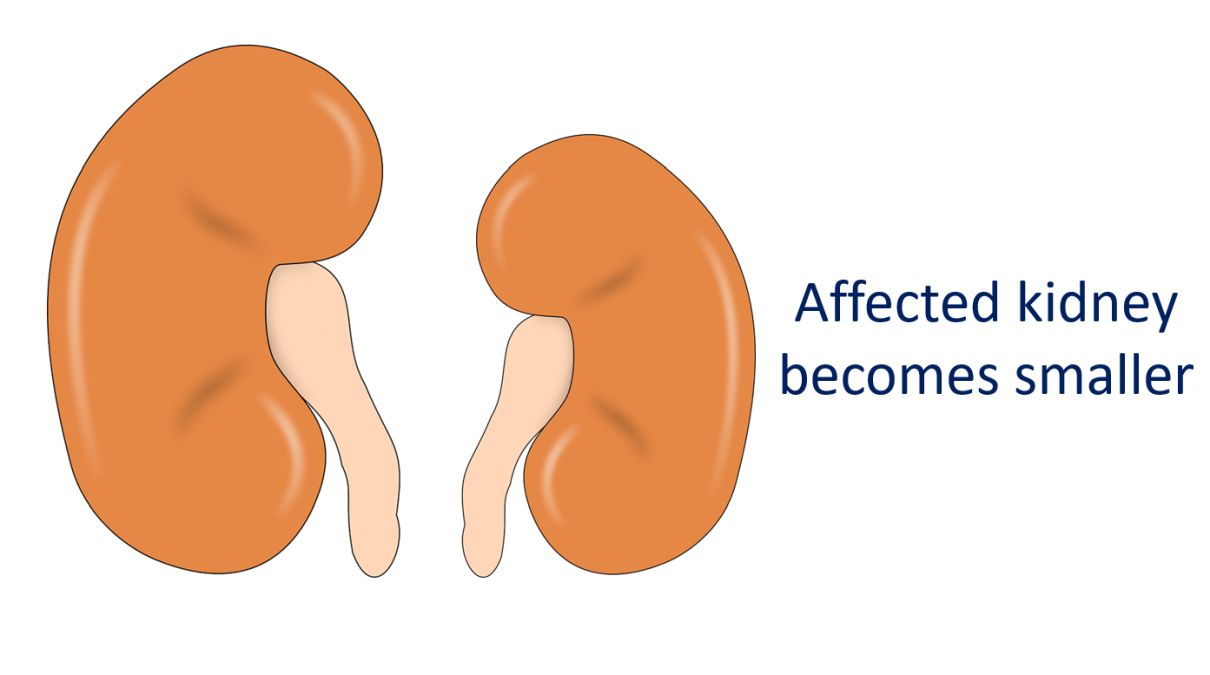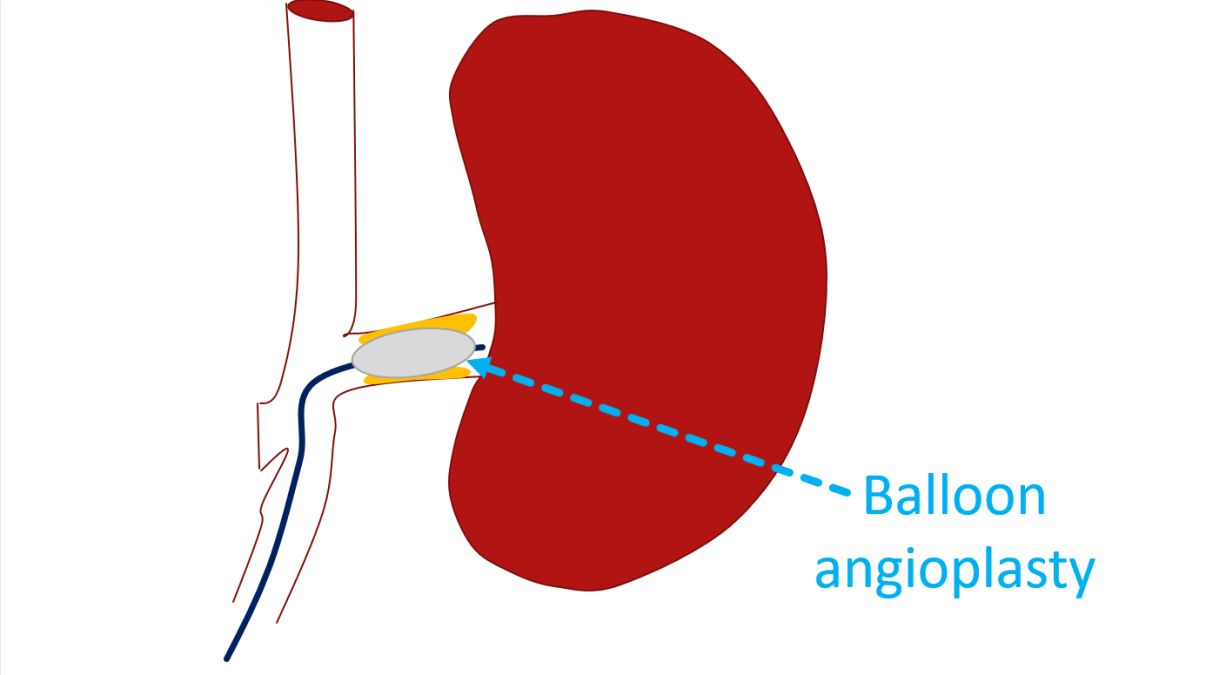What is renovascular hypertension?
What is renovascular hypertension?
Renovascular means related to the blood vessels of the kidney. Hypertension is the technical term for high blood pressure. Renovascular hypertension is high blood pressure due to narrowing of the blood vessels of the kidneys. Any other type of kidney disease can also increase blood pressure, but that is not called renovascular hypertension. Hypertension in turn can worsen kidney damage. Hence controlling hypertension is very important for the good function of the kidneys.
When a blood vessel of the kidney is narrowed, the kidney secretes certain hormones into the blood which increase the blood pressure. This mechanism is actually meant to be a protective mechanism to increase the blood flow to the kidneys when blood pressure falls. When the blood vessel to the kidney is narrowed, the blood flow to the kidney comes down and triggers the same mechanism, though the blood pressure in other vessels are not down.

Symptoms of renovascular hypertension are similar to hypertension due to other causes, with head ache, blurred vision, nose bleeds and passing of blood stained urine. As with other causes of hypertension, renovascular hypertension may also occur without symptoms. Sometimes renovascular hypertension is suspected when the blood pressure is not getting controlled with multiple medications. Another reason to suspect renovascular hypertension is when features of kidney disease are noted along with high blood pressure.
If the narrowing of the blood vessel to kidney is only on one side, that kidney appears smaller on X-ray and ultrasound scanning. A special ultrasound technique known as Doppler can detect narrowing of the blood vessels of the kidneys. It can be documented better with angiography, in which a radiocontrast medication is injected into the blood vessel and continuous X-ray imaging done. But this carries a higher risk in those with kidney disease. An alternate method is to use carbon dioxide as a contrast agent to visualize the blood vessels of the kidney. This is known as carbon dioxide angiogram. Nuclear scans are also useful in assessing the function and blood flow of each kidney separately.

Renovascular hypertension can be treated with medications which enlarge the blood vessels of the kidney. These medications may reduce kidney function, especially when the disease is present in both kidneys. Other options are enlarging the blood vessel using balloon catheters in a procedure known as renal angioplasty. Balloon catheters are small tubes with balloons at the tip, introduced through the blood vessels of the groin. Once the narrowed blood vessel is enlarged using a balloon, a stent may be inserted to prevent recoil of the vessel. Stent is a spring like metallic structure inserted into the blood vessel to support them after balloon angioplasty.

Narrowing of the blood vessel of the kidneys (renal artery stenosis) can also be treated by surgery in which the narrowed blood vessel is enlarged by an operation. Occasionally, in long standing cases, if the kidney is damaged beyond recovery, the surgeon may also remove one kidney. Removal of the severely damaged kidney will bring down the blood pressure as the excessive secretion of hormones stop. Person can function very well if the other kidney is normal. It will also prevent potential future damage to that kidney due to uncontrolled hypertension.



